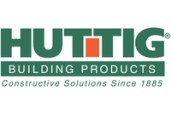Today’s savviest dealers are looking to greater efficiency to up profit margins.
That’s because a more efficient operation goes a long way toward removing costly mistakes that can quickly add up. For example, a mistake caught after the material is bundled, but not loaded, will cost $1 to correct. If the inaccuracy is discovered after loading, the cost is $10. If it is discovered after the delivery, the cost is $100. And if the oversight is discovered after the material is installed, the cost is $1,000, notes consultant and roundtable leader, Jim Enter.
What’s the best way to improve efficiency — and margins — at your yard? Here’s a primer on three key efficiency terms that can help answer that question:
1. Six Sigma. This efficiency system is a set of techniques and tools developed at Motorola in 1986. It seeks to identify and remove the causes of defects and minimize business variability. Each Six Sigma project carried out within an organization follows a defined sequence of steps and has specific value targets. An infrastructure of people within the organization become experts in these methods. The key Six Sigma methodology that applies to dealers is DMAIC. DMAIC stands for define, measure, analyze, improve and control. One of the guiding principles of Six Sigma is that variation in a process creates waste and errors. Sigma refers to a scale of quality measurement, with six sigma being the best.
2. Lean. This system comes from Japan and aims to reduce eight sources of waste. These are: overproduction, work that adds no value, unnecessary motion, delay, unnecessary transport, excess materials, defects and unengaged workers. Lean encourages signs that make clear what’s happening in work areas; set sequences and schedules for business processes; use of devices that prevent errors from being passed on to customers; cross training; and minimizing idle time between jobs. Finally, it recommends a problem-solving process of developing and executing a plan, reviewing results and adjusting plans accordingly.
3. 5S. This system was originally developed by Toyota Production System to organize spaces so work can be performed efficiently, effectively, and safely. 5S focuses on putting everything where it belongs and keeping the workplace clean, which makes it easier for people to do their jobs without wasting time or risking injury. The five “s’s” are standardize, sort, set in order (arrange), shine (clean) and sustain. Some suggest adding a sixth “s” of safety. 5S may require an up-front investment in tools like floor marking tape and labels, and training. But ultimately, 5S can make processes run more smoothly and prevent mishaps, which usually saves businesses money.
For more on how to improve your efficiency go to http://www.tamlyn.com.



